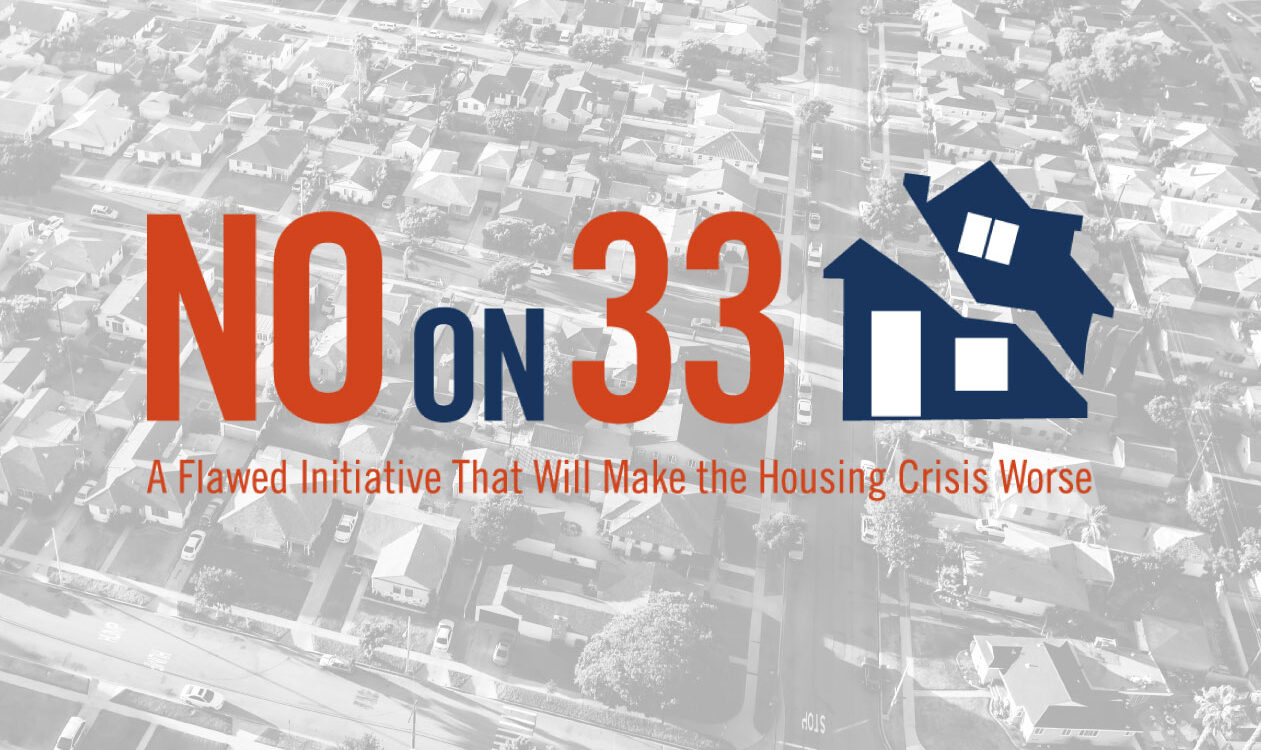What is Proposition 33: Justice For Renters Act??
For the third time in the past decade, California voters will vote during the general election on a repeal of Costa-Hawkins, triggering vacancy control on all apartments in select cities such as Los Angeles.
Proposition 33, the so-called “Justice for Renters Act” is just 23 words: “The state may not limit the right of any city, county, or city and county to maintain, enact or expand residential rent control.” It would remove California’s statewide rent control ban and give local communities the right to stabilize rents and make apartments more affordable for low-income and middle-income renters.”
This very vague language put together by the AIDS Healthcare Foundation which owns very poorly run apartments with countless housing violations in Los Angeles. The inaptly named, proposed “Justice for Renters Act” will be on the November 2024 ballot, and if passed, it would overturn the Costa-Hawkins Rental Housing Act of 1995 (“Costa Hawkins”), an important state law that exempts certain types of properties from local rent control and prevents local governments from imposing price controls on vacant units.
In California, Proposition 33 has sparked significant concern among owners of rental housing throughout the state. Originally enacted in 1995, Costa-Hawkins is currently the standard across California’s rental housing policy. It exempts single-family, condominium and newly constructed rental properties from rent control and allows landlords to charge market rate rents for units upon tenant turnover (known as “vacancy de-control”).
Achieving market rate rent upon a tenant vacancy is absolutely essential to encourage investment in housing, to allow rental property owners to keep pace with ever-increasing costs, and to maintain a balance in the housing market. The “Justice for Renters Act” threatens to introduce vacancy control, thereby capping rents after a tenant vacates. This would lead to a decrease in property values and would disincentivize future investment in property improvements and maintenance, and ultimately reduce the available supply of rental housing as investors can no longer keep up with rising costs. In effect, Proposition 33 is a “bankruptcy bill” that would force many rental property owners out of business.
Ironically, Proposition 33, does not require or guarantee that even one new unit of housing will be built upon it’s passage.
Case in Point: New York City
New York City works well as a case study. Vacancy control was passed in 2019, capping allowable rental rates upon tenant turnover to 20% of the previous tenant’s rent. This is now widely acknowledged as the main cause for current reduction in available and quality of the city’s housing supply.
Five years later New York City has a vacancy rate of 1.4%, and estimated 40,000 units deliberately vacant as the landlord is unable to earn a fair return on their investment in renovating those vacant units. One notable Multi-housing News article from 2020 discussed the consequences of vacancy control, demonstrating that it alters the investment landscape by shifting investor sentiment from property appreciation to in-place cash flow, causing a significant drop in property prices as the value-add component diminishes. This shift would have a profound impact on California’s housing market, mirroring the consequences faced in New York. In New York City, rental property values have declined as much as approximately 40% as a direct result of vacancy controls.
The difference from the last time the vacancy control vote was on the ballot in 2018 (Proposition 10) and 2020 (Proposition 21) has been a significant voter shift in California to the far left focusing on social justice issues. Liberal cities in California such as Los Angeles, Santa Monica, and West Hollywood have already decided they will institute vacancy control should proposition 33 pass this November.
Los Angeles apartment buildings historically have sold at cap rates less than the rest of the country as investors priced in rental “upside potential” and willingness to take a lower initial return. If proposition 33 passes, cap rates will go up significantly and a deterioration in value in the 15% – 35% range depending on how close the individual property rents are to market rents. Lenders will also pull back lending throughout the state as bank owned foreclosures will increase.
Now, Let’s Take Los Angeles as an Example
Here is an example – Assume a 10-unit apartment building in Los Angeles:
- Rents: $1,000 on average
- Net Operating Income: $72,000
- Estimated Value: $1,371,000 (Based on a 5.25% cap rate)
Should Proposition 33 pass this November, rental upside would be meaningless so the cap rate would need to be above the cost of debt and well above treasury yields to justify risk, so let’s call it a 6.75% cap rate. The value overnight would change to $1,066,667. The building value just dropped 22%. The main issue is with “flat top-level” revenue of rents along with increased expenses through higher utilities costs, plus doubling or tripling of insurance that continues to lower net operating income, is that this will force some owners to sell at a large loss.
The sad part of a Costa-Hawkins repeal is no one really benefits. For example, if a tenant moves out of an apartment rented for $800, the new allowable rent may be $875. However that rental unit needs to be fully renovated and may cost at a minimum $30,000. Obviously, no landlord will fork over $30,000 to earn a miniscule $900 increase in annual rent. The landlord, like many landlords in New York City, will keep that unit vacant because they just cannot afford to renovate the very dated unit. This will mean the housing stock will decrease, causing market rents for units that don’t fall under rent control to skyrocket and, therefore, hurting not only tenants that need affordable housing but also the smaller landlord that cannot afford to keep the apartment building since they are not earning a return on their investment and may even be operating at a loss!
Concluding Thoughts
The long-term effects on Proposition 33 are quite obvious for anyone who has studied economics. Institutional owners will “redline” Los Angeles and other liberal cities in California that enact vacancy control which will create less new units. Units will deliberately be held vacant after long term renters vacate creating an even smaller housing stock when we desperately need many more units throughout Los Angeles and the state.
Please contribute to the opposition campaign against Proposition 33 at: www.aagla.org/IssuesPAC. You may also mail a check payable to the AAGLA Issues PAC at AAGLA Issues PAC, Attn. Cary Davis, Treasurer, 515 South Figueroa Street, Suite 1110, Los Angeles, California 90071-3301. We cannot afford to lose.
Written by Jason Tuvia, Senior Managing Director Investments at Marcus & Millichap
Jason Tuvia is Senior Managing Director Investments at Marcus & Millichap in Encino, California. He has received multiple awards at the firm including the National Achievement Award (NAA), which is awarded to the top agents in the firm. Mr. Tuvia has closed over $1 billion in commercial real estate sales over his career. He graduated from California State University at Northridge with dual degrees in Finance and Real Estate. For more information, contact Jason at (818) 212-2735 or jason.tuvia@marcusmillichap.com.









